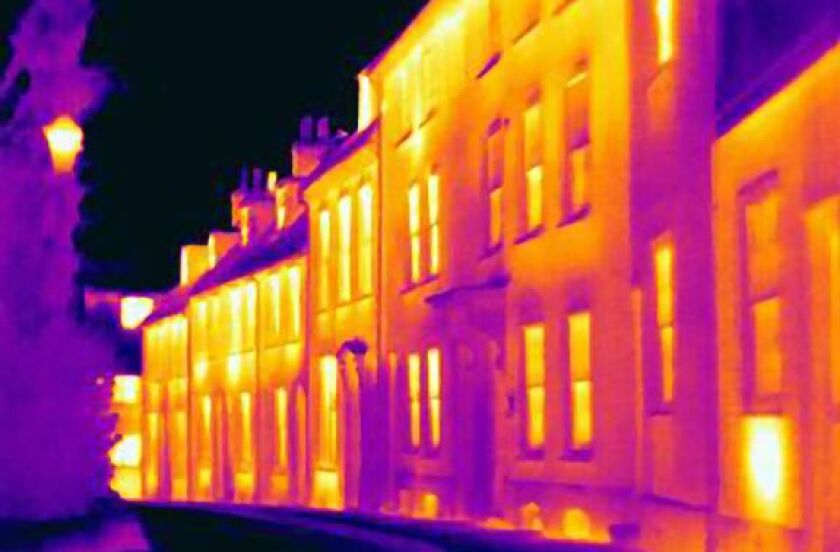Housing finance can be deployed to improve the energy efficiency of Europe’s legacy housing stock bringing about an enormous cut in greenhouse gas emissions, whilst bolstering economic recovery, according to the head of the European Mortgage Federation and European Covered Bond Council, Luca Bertalot. He spoke to GlobalCapital's Bill Thornhill earlier this week just as the COP26 conference kicked off.
GlobalCapital: Why is the housing sector so important to helping the European Union meet its goal of cutting greenhouse gas emissions?
EMF-ECBC, Luca Bertalot: Housing is a strategic sector, not just because it’s the main place where people spend their lives and increasingly work from, but also because it accounts for 40% of carbon emissions in continental Europe.
Improving the energy efficiency of housing stock is therefore going to be a really important component of the "Fit for 55" package that was unveiled by the European Commission in July. Fit for 55 legally enshrines the EU’s plan to cut greenhouse gas emissions by 55% from 1990 levels by 2030 and reduce them to net zero by 2050.
The aviation sector accounts for 3%-4% of global greenhouse emissions so, to put that in context, we’d need to make something like 210 plane trips a year to equal the emissions produced by a single family house. That shows you that improving the energy efficiency of housing stock has to be an absolutely critical component of the EC’s strategy to cut emissions.
There’s also another really important aspect to this. The home is a very special place where people spend a lot of time. This makes it an ideal focal point to begin educating consumers to become a little greener in the decisions they make.
Energy efficient renovations can reduce a property’s energy running costs by up to 50%. This is particularly relevant in a working-from-home lifestyle where energy costs are likely to be somewhat elevated.
The implied improvement in disposable income that this saving in energy costs should bring about is material and means there is a very important social connotation, especially for low-income households as, all things being equal, mortgage payments stand to become more affordable.
GlobalCapital: Can you tell me about the latest developments the EMF-ECBC has been working on?
EMF-ECBC, Bertalot: Given the importance of housing in reducing greenhouse gas emissions we felt the EMF-ECBC had a responsibility to take action and help co-ordinate around 2,000 European banks to move in the same direction.
We wanted to give banks the right instruments to, not only stimulate energy efficient mortgage production, but assist banks right through the value chain, to the point where green portfolios are funded in the capital markets. In this way we aimed to meet the needs of consumers, issuers and investors — by building an entire ecosystem that works for all participants.
Underlying this ethos is the basic need for transparency. We built on the basic concept of the covered bond label to produce a green label that would help provide the appropriate information.
Alongside our pioneering work on the Energy Efficient Mortgage Initiative (EEMI), which began in 2015, we developed the Energy Efficient Mortgage (EEM) Label. The EEM Label provides access to relevant, timely and transparent information on banks’ green loan portfolios through the Harmonised Disclosure Template (HDT).
The EEM Label, which was launched in February 2021, is designed to keep pace with legal and market best practices and is a global reference for banks and institutional investors. The EEM Label allows easier access to energy efficiency financing, green bond markets and better tracking of EEM performance.
The EEM Label provides greater transparency in relation to climate risks, portfolio resilience and fights greenwashing. It also represents the first time a transnational effort has been made to produce comparable data through a harmonised template. Currently, this is available for 30 financial institutions from 13 different jurisdictions, covering 37 labelled Energy Efficient Mortgage products.
GlobalCapital: How do these initiatives dovetail with changing face of regulation?
EMF-ECBC, Bertalot: It’s becoming increasingly clear that the regulatory policy framework for green and ESG mortgages is set to become more comprehensive which should ultimately boost eligible collateral and potentially lead to an improvement in regulatory treatment.
For example, the latest iteration of the Basel III framework, published last week, explicitly references energy efficient properties. Refurbishments that improve energy efficiency should unequivocally lead to an increase in the value of the property — to which a lower favourable risk weight can be applied by updating the loan-to-value of the property.
This gives an overarching strategic relevance to the financing of energy efficient refurbishments and touches on much of what we are doing.
In April this year the market for green mortgages got another shot in the arm after the European Commission published its EU Taxonomy Climate Delegated Act.
The Commission took the advice of its Technical Expert Group and opted to make the top 15% most energy efficient housing stock within a country as eligible for the Taxonomy which, much to everyone’s relief, was in line with current best practice.
The EEM Label provides a bridge to help banks meet the EC’s Taxonomy standard, supporting the development of environmental, social and governance markets across Europe, enabling investors to do their due diligence.
Related to this, the EMF-ECBC has put together a legal team to provide expert guidance to support to banks facing potential challenges related to the labelling of energy efficient mortgages, whilst adhering to general data protection regulation.
GlobalCapital: To what extent do you believe the renovation of existing housing stock could play in bolstering Europe’s economic recovery from the impact of covid related lockdowns?
EMF-ECBC, Bertalot: The European Commission launched its Renovation Wave Strategy for improving the energy performance of buildings in October 2020. The purpose of this strategy is to at least double the rate of housing renovation by 2030.
The renovation of existing housing stock could be at the centre of a growth strategy, leveraging financial markets, such as covered bonds and RMBS, but also green consumer loans and even green deposit accounts.
The majority of green covered bonds have funded green commercial and residential building developments, particularly new ones. However, most people live in older buildings, and it is within this kind of housing where some of the biggest gains are expected to be made in reducing the EU’s global carbon footprint.
The EMF-ECBC has been instrumental in helping to promote refurbishment, instead of new buildings, as a dimension to the green mortgage market. As part of this we helped finance improvements in three historically important buildings across Europe.
The three projects aim to set a new standard that empirically demonstrates and promotes the concept that there are immense gains to be made from renovating existing building stock.
There are estimated to be something in the region of 220m dwellings in Europe that will, on average require energy efficient investments of €25,000-€30,000. This illustrates the huge amount of spending that will be needed and the enormous impact this could have on economic recovery.
GlobalCapital: How so you expect the market for green covered bond issuance to develop?
EMF-ECBC, Bertalot: At €30bn outstanding, the green covered bond market is still a relatively niche product, but it’s growing quickly and is increasingly becoming a focal point in any investor meeting. Issuers cannot realistically go into a meeting with investors without expecting to discuss their ESG strategy.
Mortgages invariably make up the largest component of assets on banks’ balance sheets and de facto, green financing via covered bonds or RMBS has to be a part of that discussion.
It’s nice to see all the work we’ve been doing at the EMF-ECBC finally come to fruition. We’re still actively engaged in the case for reinforcing preferential regulatory treatment for ESG and energy efficient mortgages and we’re at the beginning of a long journey. But with the help and support of the market I think we’re in a strong position to make further critical progress.





